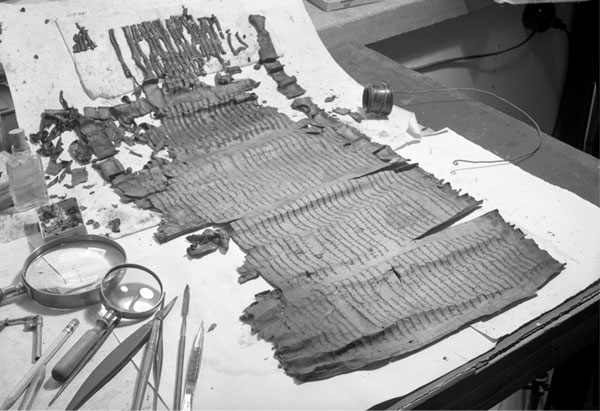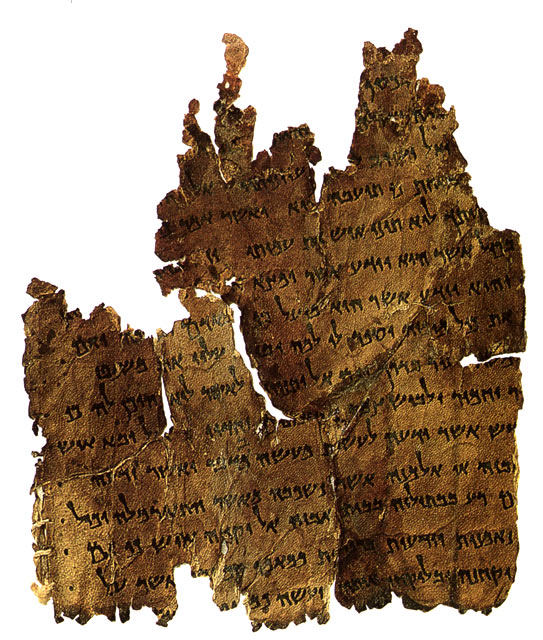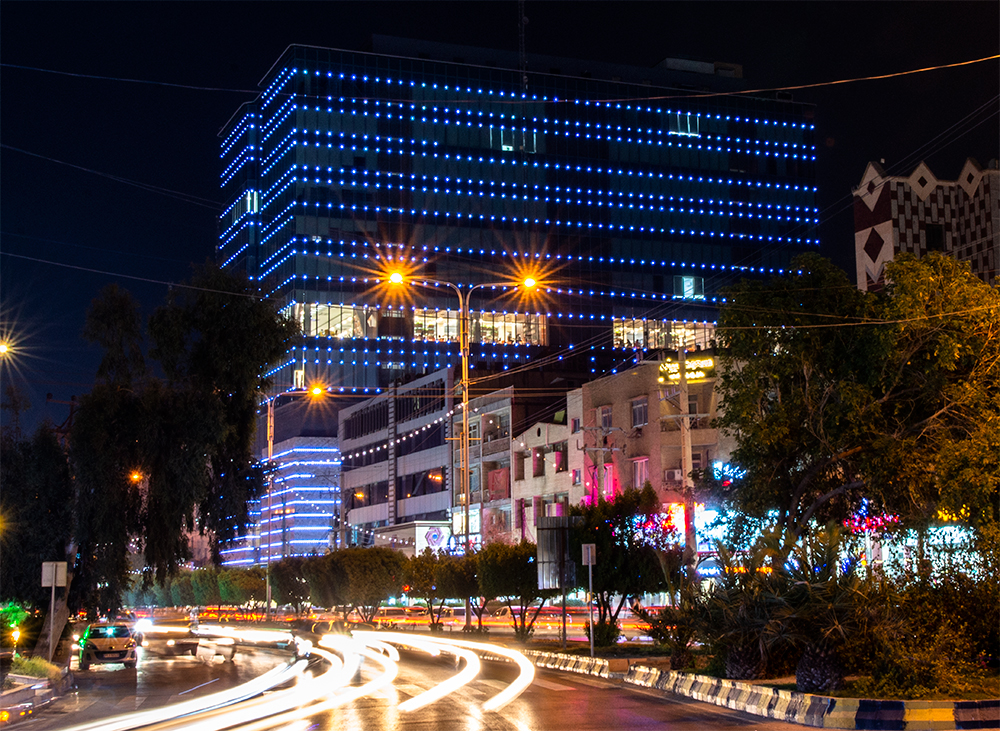|
Khaffagi Family
The Khaffagi (also spelled Khaffagy, Khaffajy, Khafajy; fa, خفاجي; ar, خفاجی or ; written Mandaic: Kupašia ) family is a Mandaean priestly family with origins in Khuzestan, Iran, although some family members also lived in southern Iraq. The family's genealogy can be traced back to the mid-1400s in Khuzestan. Other Mandaean priestly families include the Manduia, Kuhailia ( Choheili), and Durakia (Dorragi) lineages, the latter two with origins primarily in Khuzestan, Iran. Family members Notable family members include: *Ram Zihrun (late 1700s–1800s) *Abdullah Khaffagi (–1975); baptismal name: Sam Yuhana bar Bihram bar Ram Zihrun *Negm bar Zahroon (1892–1976); baptismal name: Adam Negm bar Zakia Zihrun bar Ram Zihrun * Abdullah bar Negm (early 1900s–2009) *Rafid al-Sabti (born 1965) * Ardwan Al-Sabti *Bihram Khaffagi, a tarmida in Ahvaz, Iran During the 21st century, some members of the family are now based in Nijmegen, Netherlands, where many of the famil ... [...More Info...] [...Related Items...] OR: [Wikipedia] [Google] [Baidu] |
Family
Family (from la, familia) is a group of people related either by consanguinity (by recognized birth) or affinity (by marriage or other relationship). The purpose of the family is to maintain the well-being of its members and of society. Ideally, families offer predictability, structure, and safety as members mature and learn to participate in the community. Historically, most human societies use family as the primary locus of attachment, nurturance, and socialization. Anthropologists classify most family organizations as matrifocal (a mother and her children), patrifocal (a father and his children), conjugal (a wife, her husband, and children, also called the nuclear family), avuncular (a man, his sister, and her children), or extended (in addition to parents and children, may include grandparents, aunts, uncles, or cousins). The field of genealogy aims to trace family lineages through history. The family is also an important economic unit studied in family economics. ... [...More Info...] [...Related Items...] OR: [Wikipedia] [Google] [Baidu] |
Mandaeans
Mandaeans ( ar, المندائيون ), also known as Mandaean Sabians ( ) or simply as Sabians ( ), are an ethnoreligious group who are followers of Mandaeism. They believe that John the Baptist was the final and most important prophet. They may have been among the earliest religious groups to practice baptism, as well as among the earliest adherents of Gnosticism, a belief system of which they are the last surviving representatives today. The Mandaeans were originally native speakers of Mandaic, an Eastern Aramaic language, before they nearly all switched to Iraqi Arabic or Persian as their main language. After the invasion of Iraq by the United States and its allies in 2003, the Mandaean community of Iraq, which before the war numbered 60,000-70,000 persons, collapsed due to the rise of Islamic extremism and the absence of protection against it; with most of the community relocating to Iran, Syria and Jordan, or forming diaspora communities beyond the Middle East. Man ... [...More Info...] [...Related Items...] OR: [Wikipedia] [Google] [Baidu] |
Mandaean Families
Mandaeans ( ar, المندائيون ), also known as Mandaean Sabians ( ) or simply as Sabians ( ), are an ethnoreligious group who are followers of Mandaeism. They believe that John the Baptist was the final and most important prophet. They may have been among the earliest religious groups to practice baptism, as well as among the earliest adherents of Gnosticism, a belief system of which they are the last surviving representatives today. The Mandaeans were originally native speakers of Mandaic, an Eastern Aramaic language, before they nearly all switched to Iraqi Arabic or Persian as their main language. After the invasion of Iraq by the United States and its allies in 2003, the Mandaean community of Iraq, which before the war numbered 60,000-70,000 persons, collapsed due to the rise of Islamic extremism and the absence of protection against it; with most of the community relocating to Iran, Syria and Jordan, or forming diaspora communities beyond the Middle E ... [...More Info...] [...Related Items...] OR: [Wikipedia] [Google] [Baidu] |
Khaffagi Family
The Khaffagi (also spelled Khaffagy, Khaffajy, Khafajy; fa, خفاجي; ar, خفاجی or ; written Mandaic: Kupašia ) family is a Mandaean priestly family with origins in Khuzestan, Iran, although some family members also lived in southern Iraq. The family's genealogy can be traced back to the mid-1400s in Khuzestan. Other Mandaean priestly families include the Manduia, Kuhailia ( Choheili), and Durakia (Dorragi) lineages, the latter two with origins primarily in Khuzestan, Iran. Family members Notable family members include: *Ram Zihrun (late 1700s–1800s) *Abdullah Khaffagi (–1975); baptismal name: Sam Yuhana bar Bihram bar Ram Zihrun *Negm bar Zahroon (1892–1976); baptismal name: Adam Negm bar Zakia Zihrun bar Ram Zihrun * Abdullah bar Negm (early 1900s–2009) *Rafid al-Sabti (born 1965) * Ardwan Al-Sabti *Bihram Khaffagi, a tarmida in Ahvaz, Iran During the 21st century, some members of the family are now based in Nijmegen, Netherlands, where many of the famil ... [...More Info...] [...Related Items...] OR: [Wikipedia] [Google] [Baidu] |
List Of Mandaean Priests
This article contains a list of historical and active Mandaean priests, all of whom have the ranks of Rishama, Ganzibra or Tarmida. Mandaean priestly families include the Manduia (Manduwi), Kupašia (Khaffagi), Kuhailia ( Choheili), and Durakia (Dorragi) families, all of which can be traced back to the mid-1400s. List of Mandaean priests Active Most of the following list of currently active Mandaean priests is based on Buckley (2023) and from ''The Worlds of Mandaean Priests'' website curated by Christine Robins, Yuhana Nashmi et al. *Rishamma Sattar Jabbar Hilow, Iraq *Rishamma Salah Choheili, Australia *Rishamma Professor Brikha Nasoraia, Australia *Ganzibra Najah Choheili, Iran *Ganzibra Khaldoon Majid Abdullah, Australia *Ganzibra Waleed Khashan, Australia *Ganzibra Salwan Alkhamas (or Salwan Shakir Khamas), Sweden *Ganzibra Salam Ghaiad, Sweden *Ganzibra Walid Abdul Razzak, Sweden *Ganzibra Taleb Dorragi, Iran *Ganzibra Walid Ebadfardzadeh, United States *Tarmida ... [...More Info...] [...Related Items...] OR: [Wikipedia] [Google] [Baidu] |
Baghdad
Baghdad (; ar, بَغْدَاد , ) is the capital of Iraq and the second-largest city in the Arab world after Cairo. It is located on the Tigris near the ruins of the ancient city of Babylon and the Sassanid Persian capital of Ctesiphon. In 762 CE, Baghdad was chosen as the capital of the Abbasid Caliphate, and became its most notable major development project. Within a short time, the city evolved into a significant cultural, commercial, and intellectual center of the Muslim world. This, in addition to housing several key academic institutions, including the House of Wisdom, as well as a multiethnic and multi-religious environment, garnered it a worldwide reputation as the "Center of Learning". Baghdad was the largest city in the world for much of the Abbasid era during the Islamic Golden Age, peaking at a population of more than a million. The city was largely destroyed at the hands of the Mongol Empire in 1258, resulting in a decline that would linger through man ... [...More Info...] [...Related Items...] OR: [Wikipedia] [Google] [Baidu] |
Ahvaz
Ahvaz ( fa, اهواز, Ahvâz ) is a city in the southwest of Iran and the capital of Khuzestan province. Ahvaz's population is about 1,300,000 and its built-up area with the nearby town of Sheybani is home to 1,136,989 inhabitants. It is home to Persians, Arabs, Bakhtiaris, Dezfulis, Shushtaris, and others. Languages spoken in the area include Persian and Arabic, as well as dialects of Luri ( Bakhtiari), Dezfuli, Shushtari, and others. One of the 2 navigable rivers of Iran alongside the Arvand Rud (Shatt al-Arab), the Karun, passes through the middle of the city. Ahvaz has a long history, dating back to the Achaemenid period. In ancient times, the city was one of the main centers of the Academy of Gondishapur. Etymology The word Ahvaz is a Persianized form of the Arabic "Ahwaz," which, in turn, is derived from an older Persian word. The Dehkhoda Dictionary specifically defines the "Suq-al-Ahvaz" as "Market of the Khuzis", where "Suq" is the Elamite word for market, and ... [...More Info...] [...Related Items...] OR: [Wikipedia] [Google] [Baidu] |
Nijmegen
Nijmegen (;; Spanish and it, Nimega. Nijmeegs: ''Nimwèège'' ) is the largest city in the Dutch province of Gelderland and tenth largest of the Netherlands as a whole, located on the Waal river close to the German border. It is about 60 km south east of Utrecht and 50 km north east of Eindhoven. Nijmegen is the oldest city in the Netherlands, the second to be recognized as such in Roman times, and in 2005 celebrated 2,000 years of existence. Nijmegen became a free imperial city in 1230 and in 1402 a Hanseatic city. Since 1923 it has been a university city with the opening of a Catholic institution now known as the Radboud University Nijmegen. The city is well known for the International Four Days Marches Nijmegen event. Its population in 2022 was 179,000; the municipality is part of the Arnhem–Nijmegen metropolitan area, with 736,107 inhabitants in 2011. Population centres The municipality is formed by the city of Nijmegen, incorporating the former villages ... [...More Info...] [...Related Items...] OR: [Wikipedia] [Google] [Baidu] |
Tarmida
A tarmida (singular form in myz, ࡕࡀࡓࡌࡉࡃࡀ, lit=disciple, plural form in myz, ࡕࡀࡓࡌࡉࡃࡉࡀ ; fa, ترمیدا; ar, ترميذة) is a junior priest in Mandaeism. Ganzibras, or head priests, rank above tarmidas.Drower, E. S. 1960. ''The Secret Adam: A Study of Nasoraean Gnosis''. Oxford: Clarendon Press. Ordination Tarmida initiates or novices ( ) can come from any "pure" family. In other words, the families must be ritually pure, meaning that there are no family members who have committed grave sins. Ritually pure laymen are also known as ''hallali'' in Mandaic. Typically, the novices have been trained as ritual assistants ('' šganda'' or ''ašganda'') when they were children. Initiates may or may not be married, although typically they are not yet married. In order to be ordained as a tarmida, the initiate ( ) must go through a complex series of initiation rituals lasting 68 days. Various rituals are performed by the initiator priest ( ), who recit ... [...More Info...] [...Related Items...] OR: [Wikipedia] [Google] [Baidu] |
Bihram Khaffagi
In Mandaeism, Bihram ( myz, ࡁࡉࡄࡓࡀࡌ) or Bihram Rabba ( myz, ࡁࡉࡄࡓࡀࡌ ࡓࡁࡀ, "Bihram the Great") is an uthra (angel or guardian) who presides over the '' masbuta'', or baptism ritual. Bihram is mentioned in Mandaean texts such as the '' Qolasta''. Many Mandaean masbuta ritual prayers invoke the name of Bihram. Etymology The name Bihram may have originally been derived from the Persian name Bahram, in reference to one or several of the Sasanian kings of the third century A.D. Uthra of baptism Mandaeans consider Bihram to be the uthra of baptism. Similarly, in Sethianism, Micheus, Michar, and Mnesinous are three heavenly guardian spirits presiding over the baptism of the Living Water (see also Five Seals). Mandaean name Bihram is also a Mandaean male baptismal name (as opposed to Mandaean birth names). Notable Mandaeans with the name include Yahya Bihram. In the colophons of Mandaean texts, the name Bihram is also often mentioned for different pri ... [...More Info...] [...Related Items...] OR: [Wikipedia] [Google] [Baidu] |
Mandaean Baptismal Name
Mandaean names can include both birth names (i.e., secular names) and baptismal (zodiacal) names (i.e., religious names), called ''malwasha'' () in Mandaic. Birth names Mandaean birth names are secular names that are given at birth and are used by non-Mandaeans to refer to Mandaeans in everyday life. Malwasha (baptismal names) In Mandaeism, a baptismal (zodiacal) or ''masbuta'' name, also known as ''malwasha'' ( myz, ࡌࡀࡋࡅࡀࡔࡀ, translit=malwaša, which can also mean 'zodiac'), is a religious name given by a Mandaean priest to a person, as opposed to a birth name.Drower, Ethel Stefana. ''The Mandaeans of Iraq and Iran''. Oxford At The Clarendon Press, 1937. The baptismal name of a priest reflects his spiritual lineage, with his "spiritual father" being the priest who had initiated him rather than his biological father. Since they are spiritual names that are typically used only within the Mandaean community, Mandaeans may often be reluctant to reveal their baptismal ... [...More Info...] [...Related Items...] OR: [Wikipedia] [Google] [Baidu] |






